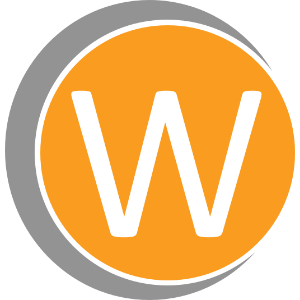How can you transform a competitive hiring landscape from a potential source of burnout into fertile ground for growth and improvement as a recruiter? This is a critical question for anyone in the recruiting field confronting challenging hiring conditions, whether they lead a team or work independently. Today, we’ll delve into this question.
Preventing recruiter burnout involves not only recognizing its signs and taking steps to address them but also understanding the underlying reasons for its emergence. Burnout often stems from excessive workloads, a sense of limited autonomy, and disruptions in the workplace’s reward, community, and value dynamics. These challenges can be further compounded when navigating a tough hiring market.

So, What Exactly Constitutes a Challenging Hiring Market?
If a hiring market is deemed tough from the perspectives of both recruiters and employers, it typically indicates a scarcity of adequately qualified candidates to fill available job positions. This shortage sets off a chain reaction where top-tier candidates are in high demand, granting them greater bargaining power and complicating the hiring process.
Similarly, prolonged vacancies can create a sense of urgency around each hire. Existing team members might find themselves understaffed and overwhelmed by increased workloads, intensifying the stress and pressure on recruiters. This situation can potentially spiral into a negative feedback loop, leading to burnout if left unchecked.
Recognizing the Warning Signs

Individuals confronted with such circumstances may begin to feel fatigued and indifferent towards their roles. This could understandably lead to feelings of inadequacy and doubts about the significance of their work.
Working alongside someone experiencing burnout, one might notice sudden irritability, reluctance to explore new ideas, decreased willingness to assist colleagues, and disengagement from workplace culture-related activities.
Subsequently, as with any negative feedback loop originating in the mind, physical manifestations may emerge. Psychologists highlight that aside from initial exhaustion, those on the path to burnout may experience persistent headaches, heartburn, gastrointestinal issues, and other unexplained ailments.
Prioritizing Self-Care and Healthy Practices

While this discussion may seem disheartening, the dark phase is behind us. Now, having navigated through the challenges, here’s some positivity: the solution encapsulated in this header might appear obvious, right? Another apparent suggestion is the initial piece of advice offered by renowned psychologists to combat burnout: “Take a break.”
While this advice may seem simplistic for someone experiencing burnout, there are instances where it proves beneficial. Beneath this surface-level recommendation lies a deeper message: individuals at risk of burnout must significantly redefine their relationship with work.
Certainly, the notion of “taking a break” might seem trivial if interpreted superficially. Is a day off, a movie night, and a return to an inundated desk of pending tasks expected to alleviate burnout?
Instead, this advice implies the need for more frequent breaks and time off. Longer working hours don’t necessarily equate to increased productivity. Advocates of a four-day workweek have echoed this sentiment for years, and studies have indicated that overtime can lead to decreased productivity.
Understanding the significance of this may be challenging, as it contradicts common assumptions. However, the essence lies in recognizing that optimal performance is unattainable without adequate sleep, nutrition, and leisure time.
Hence, another piece of advice for those nearing burnout:
Examine Beyond Your Job

Like tunnel vision preceding a blackout, individuals nearing burnout may become fixated solely on their careers, exacerbating the situation. Top performers across various fields have discovered that activities beyond work, such as spending time with family, pursuing interests, and resting, are equally vital.
Engaging in extracurricular activities not only fosters relaxation and fulfillment but also enhances productivity and problem-solving skills. This aligns with the argument posed by journalist David Epstein in “Range,” suggesting that the best solutions often emerge from diverse knowledge sources.
However, managing time effectively poses a challenge. While numerous resources offer advice on time optimization, the immediate recommendation for recruiters struggling with time constraints is:
Harness the Power of AI

You might be tired of hearing about AI tools purported to prevent falling behind. However, AI’s prominence stems from its transformative impact on various industries, including recruitment.
As someone familiar with HR and recruiting software, I won’t inundate you with a list of tasks that can be automated. Instead, consider leveraging AI capabilities embedded in your existing software solutions. Engage with vendors to explore how they’re incorporating AI to streamline processes and save time.
Lastly, as a final piece of advice in combating burnout, let’s revisit the concept of a tough hiring market. While it may seem overwhelming, remember that your reaction to external challenges remains within your control. Instead of blaming external factors, consider how you can adapt and thrive amidst adversity. These same challenges can serve as catalysts for personal and professional growth if approached with the right mindset.
Recall Your Locus of Control

As a final piece of advice regarding combating burnout, allow me to revisit the concept of navigating a challenging hiring market. The notion of a market might appear as an intricate and invisible network of interactions where individuals seem merely like cogs.
To avoid succumbing to tunnel vision and potential burnout, take a step back and view this expansive network from an external perspective. Reflect on whether any factors contributing to the difficulty of this hiring market are within your influence.
Undoubtedly, many of these elements are beyond your control. However, what remains within your control is your reaction to them. While external forces may be at play, they also present opportunities for personal growth. They can motivate you to cultivate healthier sleep habits, foster stronger relationships with colleagues, revive long-neglected interests, and engage proactively with software vendors to maximize their capabilities. These are avenues through which external pressures can empower you to evolve into a more proficient recruiter, should you choose to embrace them.
Conclusion
In conclusion, addressing recruiter exhaustion in tough hiring environments is crucial for maintaining well-being and performance. Recognizing signs of burnout, prioritizing self-care, and exploring activities beyond work are vital steps. Leveraging AI tools can streamline tasks, and maintaining a proactive mindset towards challenges fosters growth. By focusing on what’s within one’s control and embracing opportunities for personal development, recruiters can navigate difficult markets with resilience and adaptability, ultimately thriving amidst adversity.
